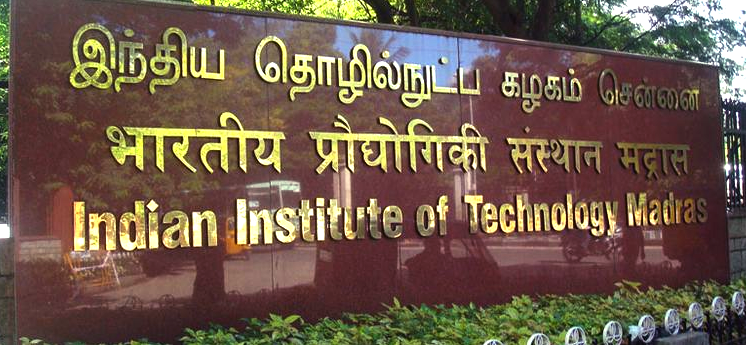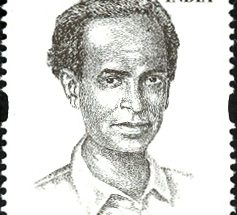Dalit Camera: Through Un-Touchable Eyes
C. K. Janu has breathed new life into the land struggles of the Adivasis and the landless in Kerala, fashioned a new autonomous language of resistance for similarly marginalized groups fighting for land rights across the country. In 2003, after the Muthanga agitation in 2003, she had written:
The Adivasi decision is to return to Muthanga. The Adivasis had become victims of untold brutalities. Yet there is no other way but to return. And the Adivasis have been made refugees in their homeland. There are the spirits of the dead in the forestlands of Muthanga. Not only Jogi, but also the bodies and souls of all those who had lived here as one with nature have merged irrevocably with the soil. None can separate them now. Anyone who enters Muthanga can see the scattered coins in front of the Sacred Temple at Thakarappady. There is also a splintered bamboo there. This was the hundi (coin collection box) of the Adivasis, smashed by the police officers and the goondas as though it was some part of the weaponry of the Adivasis. No one would pick up the coins. These coins representing the beliefs and dreams would still be there when they return….
Speaking to George Kurivilaroy of Dalit Camera: Through Un-Touchable Eyes, she returns again to land, and what it means for the Adivasis. Ajith Francis and Sudeesh Kalasham of EFLU have transcribed the interview (from Malayalam).
~
{youtube}GX4juQoUCts{/youtube}
Dalit camera: Why land matters?
C. K. Janu: Traditionally, Adivasis maintained a harmonious relationship with their land, both cultivated and forest land, and it formed an integral part of their lives. Also, these resources are inseparable to the Adivasi way of living. By and large, Adivasis were uneducated people and they earned their living by making use of the resources available to them – their lands. So they have a symbiotic relationship with the soil and even now they haven’t turned away from this eco-centric culture.
Now, after the setting up of Adivasi colonies, they are in a crisis. Land is the primal symbol of power. So without tackling the issues regarding the ownership of land, Adivasis’ problems cannot be resolved. Only those who have land can play an active role in the socio-political and cultural spheres of the society. So those who are pushed to the margins are effectively alienated from the modern institutions of power with respect to politics, bureaucracy, and social order.
For Adivasis, the resources that they get from the land are their sole revenue and therefore they maintain a blood-relation with their land. So they cannot survive without their lands.
During the Land Reforms in the 1960s, the Kerala state government decided the upper limit of land that can be possessed by an individual as 15 acres. But this limit was not applicable to the estate plantations that cultivated cash crops. Through this law, the Government assumed the ownership of the excess land. This in effect, led to the ghettoization of the Adivasi communities as they were pushed to the reserves and colonies.
The Kerala Government, instead of radically redistributing the land to the landless has in fact nullified certain core issues that the Adivasis and the Dalits faced through the introduction of ‘Kudikidappu Rights’. This marked the mushrooming of Dalit and Adivasi colonies in Kerala. This restricted Adivasis to the one or two cents of land and their huts, allotted to them in their colonies.
The Adivasis’ rituals, beliefs and lifestyle are very much inextricably linked to the soil. Alienating them from their lands, effectively alienates them from their identity and culture. There is no written document as to the rituals and traditions of Adivasis. They are orally transmitted from one generation to another. For example, traditionally, their rituals are held in a large courtyard and they require land which is spacious enough to perform their rites.
Since they have been evicted from their lands, and they have completely lost touch with their culture and eco-system. This in turn leads to the erosion of their culture and their identity itself is at stake. As they are robbed of their identity and culture, they cannot foster their individuality and dignity and their existence is beleaguered. People who are devoid of their culture and identity are incapable of sustaining their existence as a people. Adivasis because of their distinctive culture form a unique cultural bond with their lands. They rely on their land for existence, and them being uneducated ensures that they cannot get any Government jobs. So this is the reason why Adivasis resorted to land struggles and looks to add to the existing momentum.
Adivasi Gothra Mahasabha gives utmost emphasis to land struggles across the state. There are people who have been fighting for more than ten years, and it continues to be the top priority of Adivasi movements. After Muthanga, we have been part of many struggles like the Aralam Farm land struggle (where our struggle led to the distribution of 3500 acres of land to 3500 families). We have never gone back from our struggle for land.
There are some police cases against about 700 of our activists and the time spent on running after these cases in court has had an impact on our activities, nevertheless we have never changed our priorities.
Law as such is not an obstacle in our struggle, if it is implemented properly. But those who are supposed to implement the Law do appear as obstacles in our struggles. Laws do not reach the intended beneficiaries, because of the lack of proper implementation. For example, let us take the case of the 1975 legislature regarding the returning of the land the Adivasis have lost. This was a gesture welcomed by the Adivasis.
The bill was passed unanimously by the Kerala Legislative Assembly. This law was included in the 9th Schedule of the Indian Constitution (thereby making it immune to future amendments). But the lack of proper implementation by those in power has left the Adivasis lurching in the dark. This is the reason why the intensity of struggles increases day by day. The 1974 Vesting and Assignment Act of the Kerala Government also have the provisions to return the land confiscated from the Adivasis (and under the possession of the Revenue Department till 1975) with the implementation of the Land Reforms in the 1960s back to them. This land thereafter is classified as Revenue Forests.
The Madhav Menon Commission has recommended that 50 percent of the revenue Forests should be distributed among landless Adivasis. So if at least these recommendations were put into practice, all of the landless Adivasis would have got their lands back. The alternating governments over the years, have been least bothered about implementing these recommendations.
To be continued.
~~~










